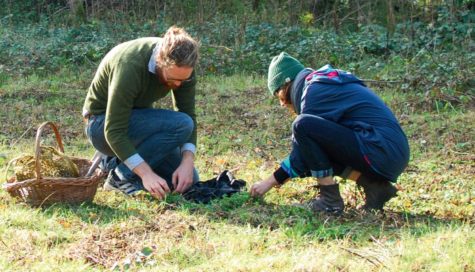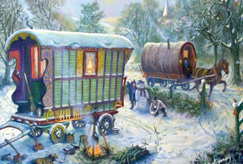Wayside Herbs
Much of the gypsy`s strength and health came from the abundance of wayside plants which they understood and knew how to use to keep them healthy. Many of these wayside herbs are recognized by herbalists and can be obtained from them in a dried form. Others are so readily available that they grow unasked in any garden and are angrily rooted up and thrown away even destroyed by weedkiller in ignorance of the goodness that is so carelessly discarded.
The children of the gypsies were often sent out to gather sack loads of herbs, particularly dandelions and stinging nettles. These were sent to chemists and herbalists to be made up into remedies. It makes you wonder if farmers as they plow through their fields realize how much value they are destroying as they plow in all the herbs and `weeds`. To cultivate and sell them for use in medicine might well pay more than selling cabbages!
Where there is much damp and water, there grows the willow, with its bark to cure aches and pains. The names of many herbs and roots point to the complaints they can cure- for instance, chestnut leaves for chest complaints, gravel root for stone and gravel in the kidneys, Liver Wort for the liver, Lung Wort for the lungs and Hearts Ease for weak hearts.
Where there is a nettle to sting you,always close at hand you will find a dock leaf to rub on the sting and reduce the pain. But besides this practical use of the leaf, the Romanies also know that the seeds of the dock form part of a charm against pain. They should be gathered when fully ripe, placed in a little muslin bag and tied round a patients left arm. This old gypsy charm will cure many pains and it is particularly useful to any woman or girl who suffers pain with her periods.
The gypsies often wore herbs- for instance, balm,which gives out a wonderful lemony scent when the leaf is picked and rubbed between the fingers. The Romanies believed that wearing the leaves and roots in a sachet next to the heart made one beautiful, healthy and happy. Bees love it and for this reason it is often called Bee Balm. If you grow it in your garden you will know how swiftly it spreads. The best time to harvest it is in July in the early morning.
Burdock grows wild on waste ground, in hedges and by the wayside. Its leaves are large and heart- shaped and its purple flowers bloom in July and August. It is said that wearing burdock seeds in a muslin bad, around your neck, keeps rheumatism at bay.




Leave a Reply